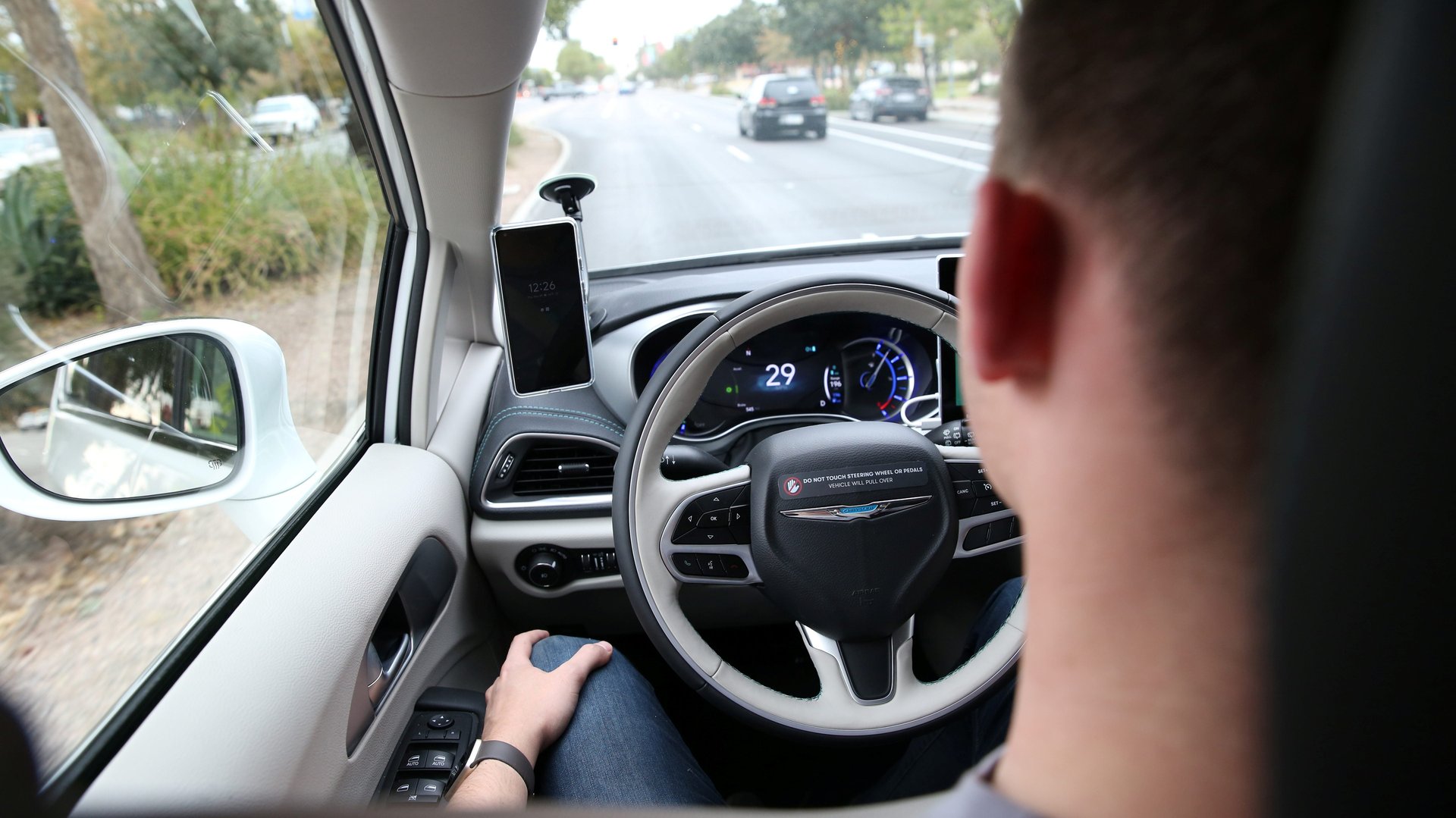Waymo’s self-driving cars are going fully driverless in San Francisco
Waymo will begin operating self-driving taxis in San Francisco without a person behind the car’s vestigial wheel. In a March 21 blog post, it said it was “ready to begin introducing the Waymo Driver in fully autonomous mode” and called it “a major step on our path to deploying a fully autonomous commercial service.”


Waymo will begin operating self-driving taxis in San Francisco without a person behind the car’s vestigial wheel. In a March 21 blog post, it said it was “ready to begin introducing the Waymo Driver in fully autonomous mode” and called it “a major step on our path to deploying a fully autonomous commercial service.”
Waymo, which—like Google—is owned by Alphabet, didn’t say when it would begin phasing out the so-called “safety drivers” in San Francisco. It declined to comment on this story.
Waymo has been running some version of a ride-hailing service in San Francisco since February 2021, when it launched a robotaxi fleet exclusively for its employees. In August, it expanded the service to a limited group of San Francisco residents known as “trusted testers.” Since then, Waymo has been honing its driving software and pushing for government approvals to launch a fully driverless ride-hailing service open to the whole city.
Self-driving car algorithms and regulations are location specific
Waymo already operates a driverless robotaxi fleet in Phoenix. That’s where the company opened the first fully autonomous ride-hailing service in the US on Oct. 8, 2020. Its cars have been ferrying passengers around the city for the past year and a half. But expanding to other cities has proven to be a technical and regulatory challenge.
Although Waymo has already demonstrated that its self-driving algorithms work safely in Phoenix, those skills don’t necessarily translate to other cities. The basic mechanics of driving are the same anywhere, but the driving conditions in flat, sunny Phoenix are markedly different than those in foggy, hilly San Francisco. Cars in each city have to follow a different set of state and local driving rules. Plus, most self-driving algorithms rely heavily on high-definition maps of the local terrain to operate safely.
“My guess is that the algorithms that Waymo was testing in Phoenix would work in San Francisco, but without testing and proper evaluation it would not be responsible to provide fully autonomous rides,” said Srikanth Saripalli, who heads the Center for Autonomous Vehicles and Sensor Systems at Texas A&M University.
In its blogpost, Waymo said it had tailored its algorithms’ driving patterns to accommodate San Francisco’s steep hills, frequent four-way stops, and high density.
Waymo also has to overcome a different set of regulatory hurdles in San Francisco. In Arizona, state legislators cleared the way for self-driving cars in 2018. California, by contrast, only granted Waymo a permit to operate a commercial robotaxi less than a month ago on Feb. 28. That permit stipulates that Waymo can’t charge people for rides unless there’s a safety driver in the car.
Self-driving cars, in other words, are a highly local technology. Although Waymo hopes to launch them soon in San Francisco, that doesn’t necessarily mean that many other cities will quickly follow.